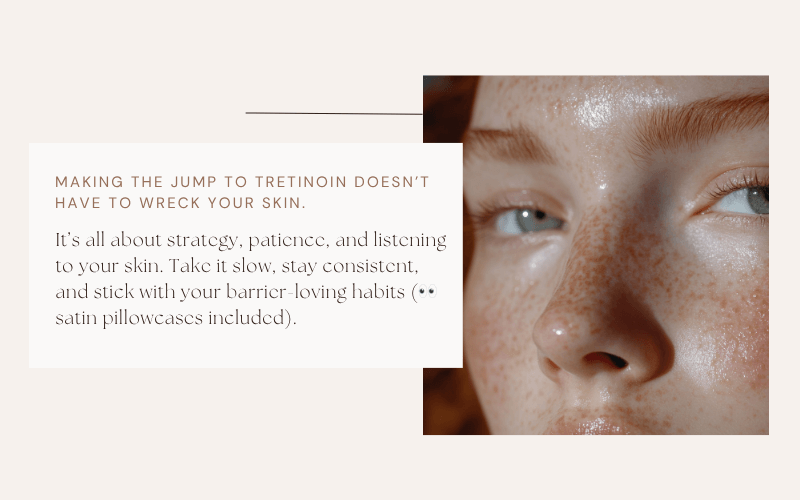How to Transition from Retinol to Tretinoin Without Wrecking Your Skin Barrier
So, you’ve flirted with retinol… and now you’re eyeing tretinoin? We get it. It’s a glow-up in a tube. But before you go full throttle, let’s talk about how to level up without setting your face on fire.
Transitioning to prescription-strength tretinoin (aka Retin-A) is a bold—and smart—skincare move, especially if you’re dealing with acne, texture, or signs of aging. But there’s a right way to do it. Let’s break it down in a way that your skin (and Google) will thank you for.
💡 First, What’s the Big Deal with Tretinoin?
Tretinoin is the real MVP in the skincare world. Think of it as retinol’s older, tougher sister—more powerful, faster acting, and backed by decades of clinical results. But like all things worth it, it takes time, patience, and a little strategy.
🪞 Step 1: Know Your Starting Point
Before diving into tretinoin, it’s key to understand where your skin stands right now.
Ask yourself:
Have I used retinol or adapalene (Differin) before?
Is my skin sensitive, oily, combo, or dry?
Do I already have a basic skincare routine with moisturizer and SPF?
If you’re a total newbie to actives, you may want to flirt with over-the-counter retinol or adapalene for 6–8 weeks before making the jump. Think of it like training wheels for your skin.
🧴 Step 2: Build Your Barrier First
Trust us, the strongest skin wins. That means using a gentle cleanser, rich moisturizer, and broad-spectrum SPF every single day.
Avoid exfoliants, vitamin C serums, or anything intense a week before starting tretinoin. Give your skin a moment to chill.
Pro tip: Sleeping on a satin pillowcase (👋 hey Olki fam) is a gentle way to protect your skin barrier overnight. Unlike cotton, satin won't suck up your skincare or drag on your face.
⏳ Step 3: Start Low and Slow
Tretinoin isn't a race—it’s a marathon.
Here’s how to start:
Frequency: 2x a week for the first 2–3 weeks.
Amount: A pea-sized dot. Yes, that’s it.
Timing: Apply at night only.
Moisture sandwich: Cleanse ➡️ Moisturizer ➡️ Wait ➡️ Tretinoin ➡️ Moisturizer again.
You can even buffer tretinoin by mixing it with your moisturizer if your skin is super sensitive.
🚫 Step 4: Avoid These Common Mistakes
Seriously—don’t self-sabotage your glow.
Don’t skip SPF. Tretinoin makes your skin more sun-sensitive.
Don’t overdo it. More is not more here.
Don’t freak out during purging. Breakouts in the first 4–6 weeks are normal. It gets better.
🌿 Bonus Glow-Up Tips
Use calming ingredients like niacinamide or thermal water during off days.
Drink water (and try spearmint or green tea—they help with hormonal acne).
Switch to a satin pillowcase. Yes, again. Satin helps your skin stay hydrated and wrinkle-free while you sleep. It’s basically an overnight facial in fabric form.
🧼 Suggested Beginner Skincare Routine (With Tretinoin)
AM:
Gentle Cleanser
Niacinamide Serum
Moisturizer (Vanicream is gold)
Mineral SPF 30+
PM:
Cleanser
Moisturizer
Wait 15 minutes
Tretinoin (pea-sized)
Optional: Moisturizer again on top
🧠 Conclusion: You Got This!
Making the jump to tretinoin doesn’t have to wreck your skin. It’s all about strategy, patience, and listening to your skin. Take it slow, stay consistent, and stick with your barrier-loving habits (👀 satin pillowcases included).
Glowy skin is around the corner.

